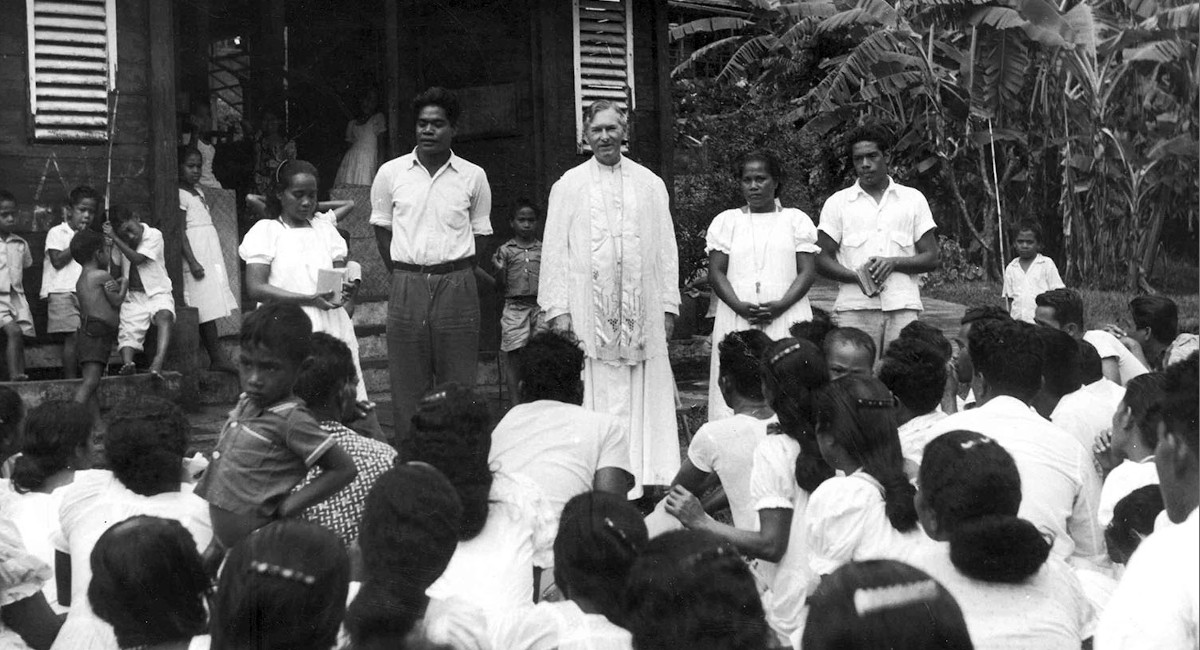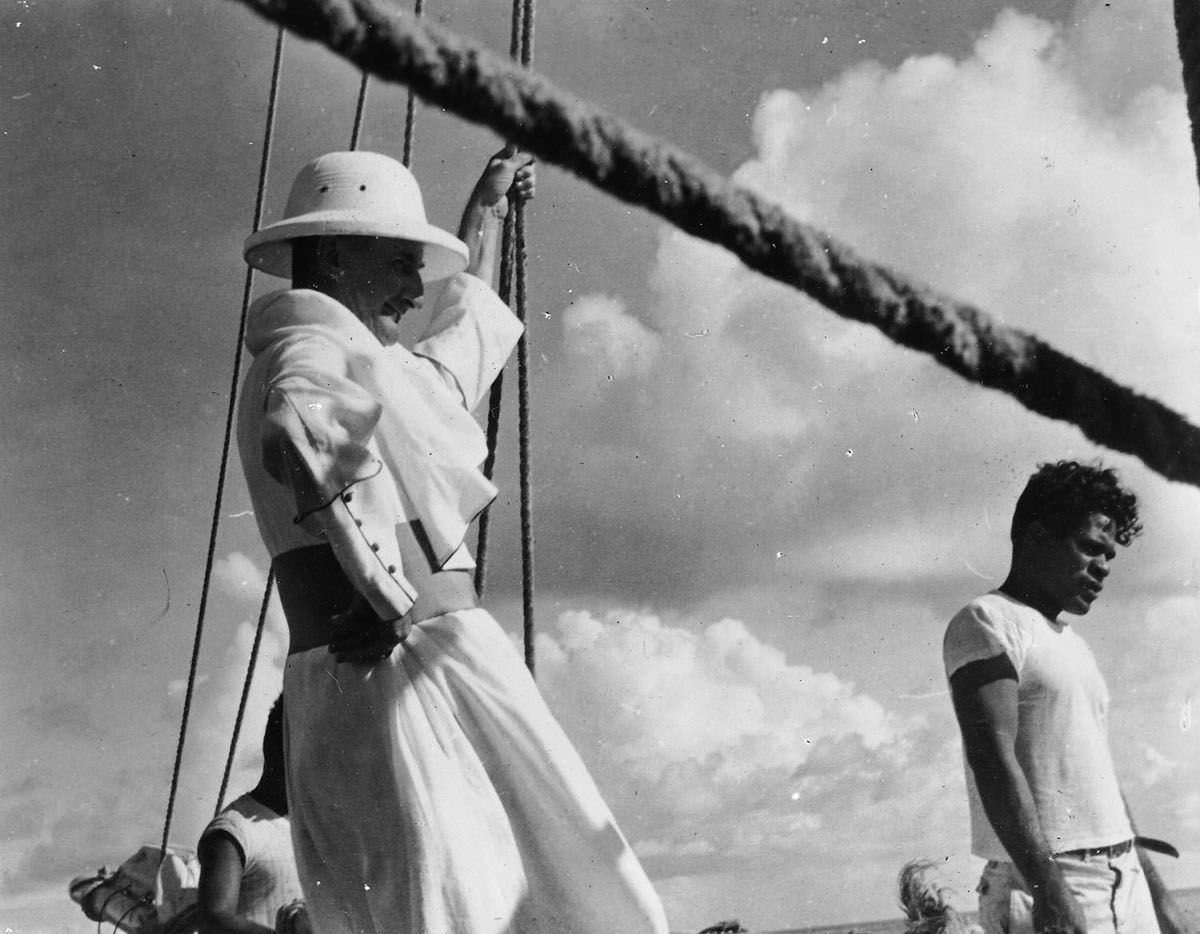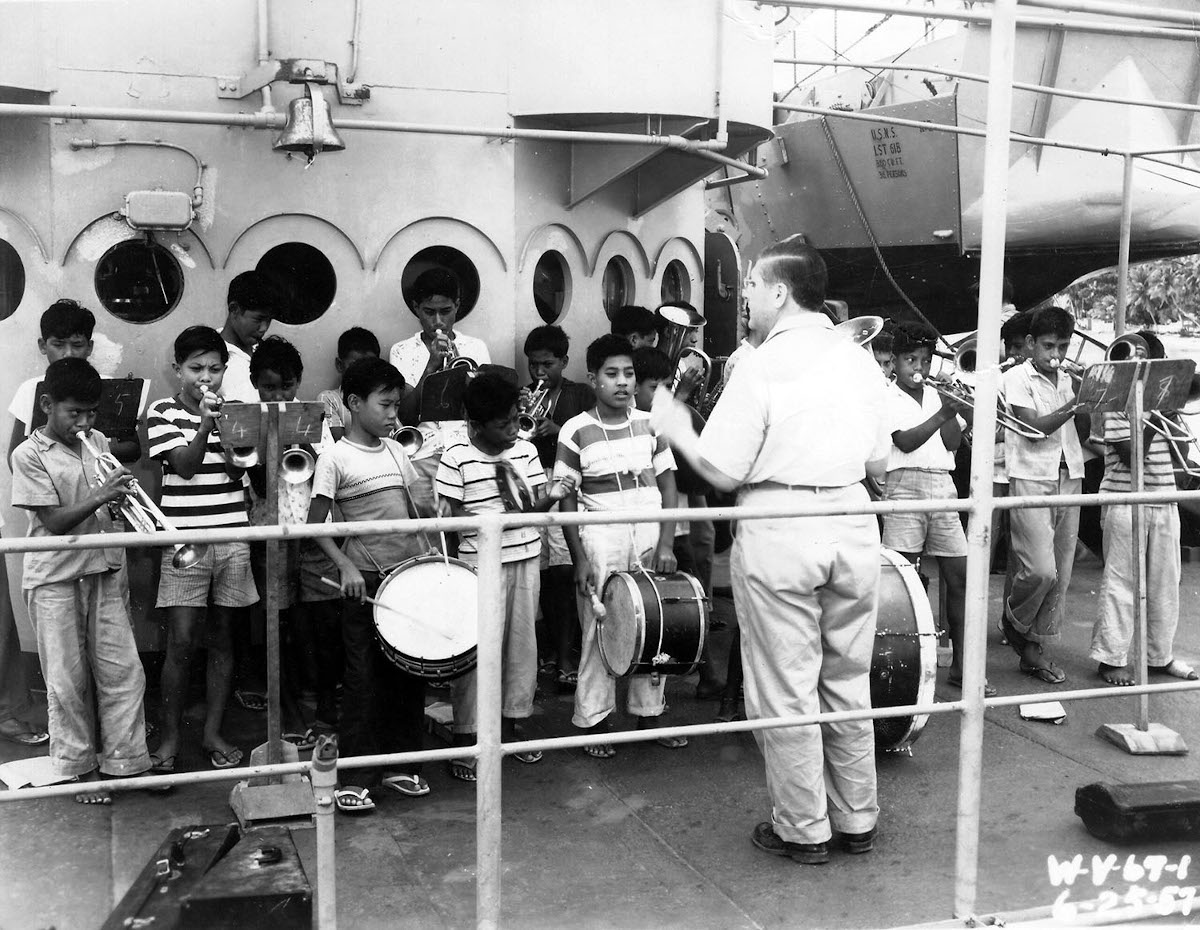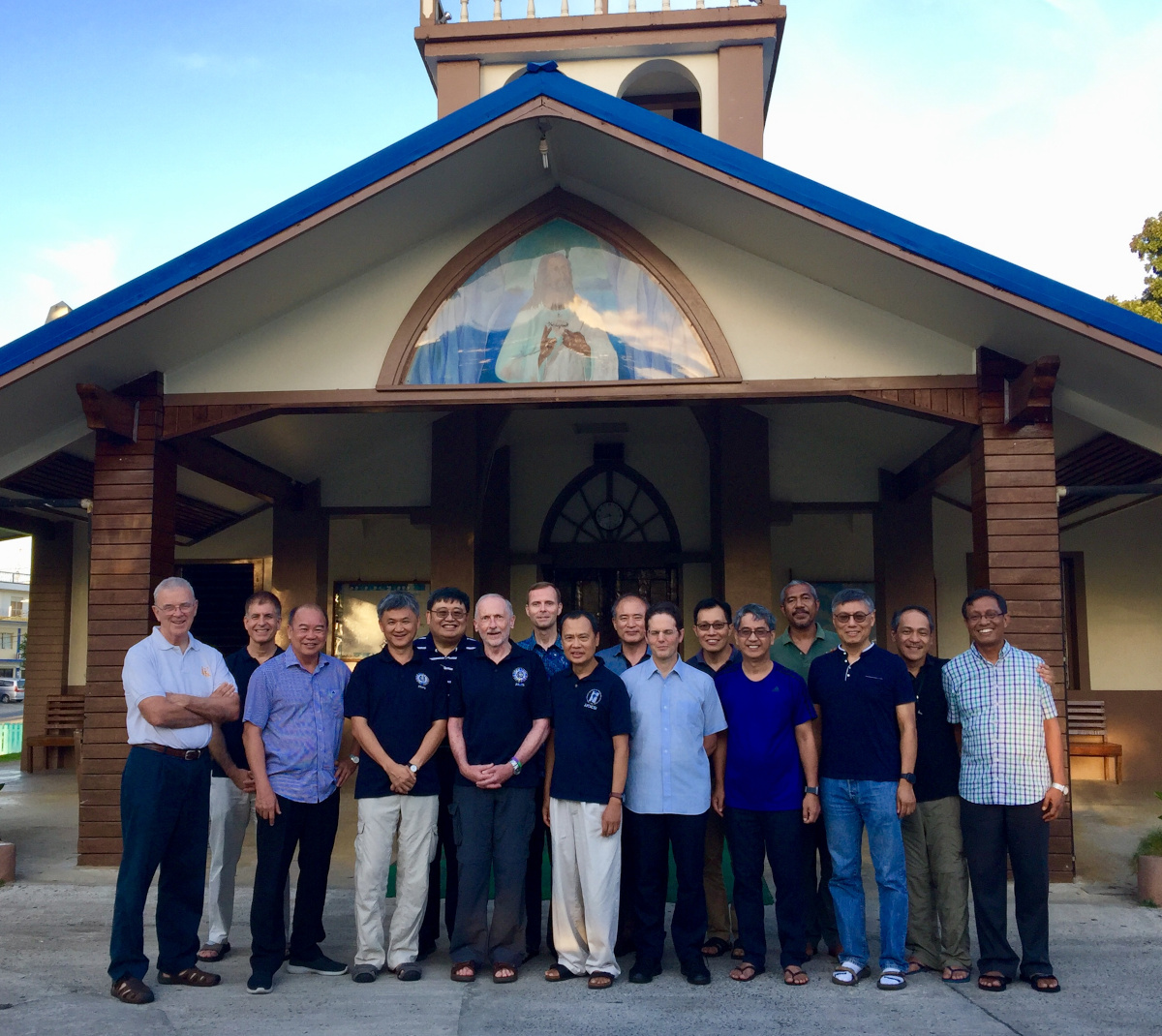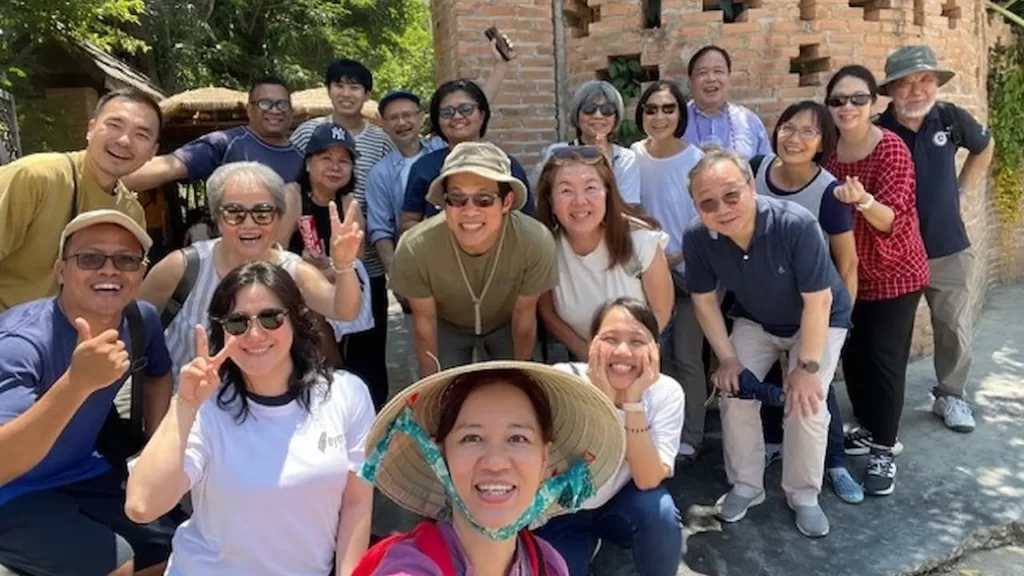This month marks 100 years since the arrival of Jesuit missionaries in Micronesia, when on 6 March 1921, two Jesuits — Fr José Pájaro and Br Florencio Mancera — arrived on the island of Tonoas (Dublon) in the Chuuk lagoon to rebuild the mission that the Society of Jesus had founded in the seventeenth century.
The Jesuits first established a mission on the Marianas in the Western Pacific Ocean in 1668 through the Philippine Province. Spanish missionary Blessed Diego Luis de San Vitores arrived on the island of Guåhan (now Guam) on 15 June 1668 along with five other Jesuits and a 13-year-old Filipino sacristan, St Pedro Calungsod.
Although the Jesuits intended to reach Japan, Palau, the Caroline archipelagos, and other Pacific islands, the Spanish crown encouraged them to stay in the Marianas until 1769 when the Jesuits were expelled from the Philippines during the worldwide suppression of the Society of Jesus.
In 1899, having suffered a defeat in the Spanish–American War, Spain sold the Caroline and Marshall Islands to Germany. German Capuchins and Sacred Heart Missionaries established mission stations, but German acquisition of the islands was brief. Japan declared war against Germany in 1914 and forced the German missionaries out of Micronesia.
It was not until the twentieth century when the Jesuits returned to Micronesia, assuming responsibility of the mission on the Northern Marianas along with the Caroline and Marshall Islands. Japan had sent Admiral Isoroku Yamamoto to the Vatican to request missionaries in response to the people’s petition for more priests. Pope Benedict XV, having failed to persuade different religious orders to take on the mission, finally turned to the Jesuits, invoking the Society’s vow of obedience to the Pope.
So in the late 1920s Fr Santiago Lopez de Rego SJ led a contingent of 22 Spanish Jesuits headed for the Pacific. Fr Pájaro and Br Mancera anchored off Toloas. A couple of days later, on 14 March 1921, Fr José M Gumucio and Br Ramón Unamuno disembarked on the island of Yap. Four Jesuits, Fr Indalecio Llera, Fr Marino de la Hoz, Br José Gogénola, and Br Emilio Villar, were dropped off on the island of Palau. The ship continued on to Ponapé (now Pohnpei) and four more Jesuit missionaries disembarked – Fr Luis Herrera, Fr Pedro Castro, Br Victoriano Tudanca, and Br Paulino Cobo.
Historian and former Regional Superior of Micronesia Fr Francis Hezel SJ describes the arrival of the first missionaries succinctly in his blog: “As the ship sailed eastward, Jesuits were dropped off at one island group after another until all 22 men were put ashore. With that the Jesuit era in the islands began.”
At the end of World War II, the mission was placed in the hands of the American Jesuits. Fr Hezel recalls a number of “newcomers” in the years after the war.
“There was the one in Palau who co-authored the first local dictionary. Or the former military chaplain, the one who built church after church in the outer islands and who swam every afternoon. The brother in Chuuk who was always building churches and schools and rectories, but would amuse the kids by pulling out his dentures and clicking them. The tres amigos on Pohnpei, led by a two-pack-a-day smoker who never seemed to inhale, but was tireless in organising revolutionary church programs during the 70s. Or what about the priest who became a bandleader in Majuro even if he couldn’t really read music, and a part-time bus-driver as well? (Someone had to pick up the Catholics for Sunday mass.)”
Having lived and worked in Micronesia since the early 1960s, Fr Hezel remembers many of the earlier American missionaries with fondness. “I don’t recall seeing bright halos ringing their heads,” he says. “They didn’t mind having fun, but they also knew how to get the job done.” He considers the arrival of the Jesuits in Micronesia in 1921 as “one of the greatest blessings in my life”.
Micronesia is a mission of the USA East Province, where Jesuits serve in various ministries on the islands of Pohnpei, Chuuk, Guam, Yap, and Palau. “Micronesia holds a special place in the Jesuit Conference of Asia Pacific (JCAP),” says President Fr Tony Moreno SJ. “Over the years we have sent people there and they have sent their people to come here.” The superior of the Jesuit community in Micronesia is a member of the Conference of Major Superiors. Two of the past conference presidents, Fr William McGarry SJ and Fr John Curran SJ, came from Micronesia, and many others have contributed to JCAP’s mission. More than a handful of Indonesian Jesuits spent their Regency in Xavier High School in Chuuk and hold dear the memories of their formative years there.
As the Society celebrates 500 years since the conversion of St Ignatius Loyola, we also commemorate the arrival of the first Jesuits in Micronesia 100 years ago. We remember them who gave their life in the service of the Church and Society.
Source: The Historiography of the Jesuit Presence in Oceania by Alexandre Coello de la Rosa

